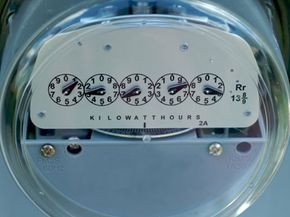Each month, a bill arrives to remind us just how far we've come from the days of cooking with fire and cleaning in a stream. Some of us put a couple hundred dollars a month into powering ovens, dishwashers, air conditioning, heat, lighting and all the other wonderful, electron-driven trappings of modern life. And sometimes when we look at that bill, it seems crucial to start line drying instead of using the dryer.
But to actually reduce our electricity costs -- and do some environmental good -- it's necessary to think more than once a month about conserving energy. Energy monitors are one of the easiest, most effective ways to inspire real change in consumption habits. They bring energy costs to your attention on a regular basis, making it a little harder to forget to line dry your laundry.
Advertisement
An energy monitor is simply a device that counts watts. You plug an electrical appliance (or a whole house full of appliances) into an energy monitor, and plug the monitor into a wall outlet. It sits between the appliance plug and the energy supply. As electricity moves through the monitor and into the appliance, the device tracks, displays and records how much electricity the appliance is drawing to operate.
There are a couple of different approaches to monitoring energy in this way. You can monitor your entire home's energy use using a comprehensive system, a single appliance at a time or a particular collection of energy suckers, like the components of a home-theater setup. It all depends on how you want to go about it and how much you want to spend.
In this article, we'll look at several different energy monitors out there and see what they can do. We'll begin by focusing specifically on one of the least expensive devices you can choose: the Kill A Watt.
Kill A Watt is a simple, straightforward way to monitor energy consumption, and it allows for targeted monitoring, which can be great for certain applications.


